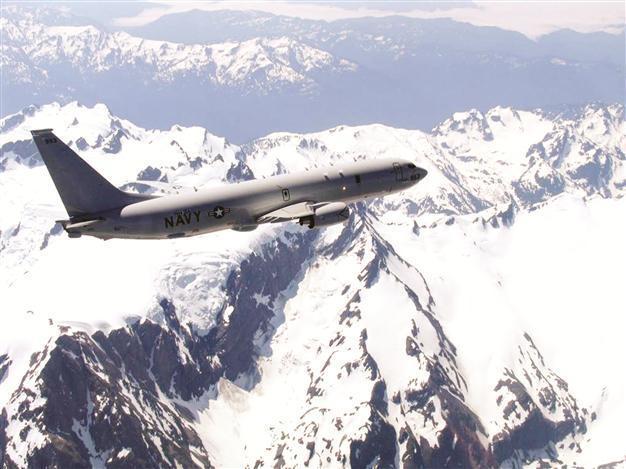Sea tensions, piracy in Asia boon for aircraft producers
PARIS - Agence France-Presse

This image taken from the Boeing website shows a P-8A Poseidon, a long-range anti-submarine warfare, anti-surface warfare, intelligence, surveillance, and reconnaissance aircraft.
Simmering territorial tensions over Asian seas and the rise of piracy are fuelling demand for naval patrol planes, now one of the fastest growing segments in the aeronautic military plane sector.
Packed with electronic equipment, these planes are capable of patrolling the seas, monitoring fishing zones, as well as running recognizance in pirate-infested maritime corridors.
“Maritime patrol is the buzzword right now in defense aviation circles,” IHS Jane consultant Gareth Jennings said. “It is the capability most showcased at trade shows today.”
“One of the main reasons behind this is the growing influence of China and the U.S. shift in focus to the Asia-Pacific region.”
Tensions have soared in recent years as Vietnam and the Philippines accuse China of increasingly assertive claims to territories in the South China Sea, through which around half of the world’s cargo passes.
And China is increasingly deploying naval forces to protect its claims, including of the Paracel and Spratly Islands.
Surveying disputed waters
The broader region is rife with maritime disputes, with the Philippines and Taiwan recently at loggerheads and China and Japan embroiled in a bitter dispute over islands in potentially energy-rich waters of the East China Sea.
Jennings said that military patrol aircraft were “vital for nations looking to protect their economic interests in a region that is riddled with territorial disputes.”
Boeing touts its P-8 Poseidon, developed on the basis of the 737 medium-haul aircraft, as the best option when it comes to maritime patrol. “If you claim territorial waters, you need to be able to survey them,” declared Egan Greenstein, director of business development for the Boeing P-8, during a recent tour of the assembly line in Seattle in the U.S.
The Poseidon arming capabilities are plentiful, allowing it to be equipped for anti-submarine operations, anti-espionage surveillance and it can also be used as a command platform. Boeing is producing one aircraft a month to be able to deliver on the 117 aircraft the U.S. Air Force plans to order.
‘The P8 is the solution’Meanwhile in May, the American aircraft maker delivered the first of eight planes ordered by India, the group has also signed a partnership deal with Australia.
Boeing hopes to book 60 more orders for export, the company’s “fair share” of a booming business, Greenstein said.
“It’s a competitive market place but if you think you have neighbors with submarines, or if you need to be out there for 10 hours or you need to engage a target, the P8 is the solution,” the Boeing pitchman said.
Demand is global. According to Yonhap news agency, South Korea last month approved a plan to buy 20 planes to improve its surveillance of North Korean submarines. Boeing’s rivals in the boom include fellow American company Lockheed Martin, which is overhauling its P-3 Orion developed in the 1960’s, and Sweden’s Saab.
Alenia, a unit if Italy’s Finmeccanica, offers its own version of the ATR-72, which has already been snapped up by Turkey. Airbus Military, a unit of European giant EADS, equips its twin engine C-235 and C-295 for maritime surveillance. Domingo Urena-Raso, head of Airbus Military, pointed out that the planes are now patrolling the seas off the coast of Somalia to track pirates.
Japan, US in ‘dawn blitz’
TOKYO – Agence France-Presse
Japan and the United States have started a joint drill to practice retaking remote islands, the Japanese government said yesterday, as Tokyo and Beijing continue to face off over a disputed archipelago.
Defense Minister Itsunori Onodera, who has previously stressed “Dawn Blitz” was not aimed at China, told reporters that the joint exercise was designed to “significantly contribute to our capability.” It is the first time all the three arms of Japan’s Self Defense Forces - army, navy and air force - have taken part together in a drill based on the U.S. mainland.
The U.S.-led exercise in California will last until June 28 according to the U.S. Marine Corps.
